Taking an Objective Look at the Standards of Age Group Triathlon Swimming
Hey Team, it’s Rory here. Age Group Triathlon swimming is completely different to any other type of swimming. It’s impossible to compare the swim times of Age Group Triathletes to pro triathletes or specialist swimmers. Even within the ranks of Age Group Triathlon swimming, comparisons are difficult.
The unique set up of Age Group Triathlon swimming makes your job of goal setting and benchmarking downright confusing. I mean, should a 50-55 year old man be setting the same goal times as 25-29 year old woman? Is 2.00/100 a good pace to hold for an Ironman? Will 1.20/100 get you to the front of the pack? I’ve seen this uncertainty lead to endless frustration and a cycle of a love hate relationship with the water from many triathletes over the years.
So I set out to find what the standards of Age Group Triathlon Swimming actually look like.
In this guide I will show you what it takes to be better than average as an age group triathlon swimmer in every AG. We will also take a look at how fast you need to swim to be considered “good” for your age and gender, as well as what it takes to make it in Kona and as a specialist swimmer.
My hope is that what you read will help give you some context to the nuances and standards of age group triathlon swimming. It’s certainly been valuable to my athletes in helping them chase goals that are appropriate and realistic. I hope it will help you too.
After hours of data mining and crunching numbers, I’m excited to share this with you.
~ Rory
Do You Know How You Really Stack Up?
I have always felt that Age Group Tri swimming is a completely different to any other type of swimming.
I often hear my Age Group athletes ask:
● “I am just curious what is considered a good pace for me to aim for this season?”
● “I know that is hugely subjective, but what is a good time for my first 70.3 swim?”
● “How long do you think it will take me to swim 1.20/100m? That will put at the front of the pack, won’t it? ”
These haven’t been easy questions to answer with objective, data backed numbers. Until now…
I started working with triathletes in 2009. I immediately recognized that Age Group Tri swimming was unique. As an Age Grouper you can’t compare your swim times a with specialist swimmers or elite triathletes. Setting goals off pro or specialist times is mission impossible.
Here’s why.
Time spent in the water correlates to improvements in swim speed. To get good at swimming you have to swim. This is what we call the “specificity” principle of training. Swimming training will improve your swimming better than running or riding will.
Swimming is a bit of a unique sport. It requires more specific training than most others. We sit, stand, walk and run every day and have done since we were children. As a result we have a foundation in movement that easily transfers into other land based sports. We know how to balance, how to move forward and how to breathe on land.
But moving through water is different. Balance is different. How you propel yourself forward is different. How you breathe is different.
To get really good at swimming you have to re-learn and then master each of these skills in the water. This requires a consistent time investment.
Pure swimmers and coaches know this. That’s why they start swimming at a young age. “Specialist” swimmers spend hours in the water to improve their balance, propulsion and breathing.
On the elite end, swimmers will spend upwards of 5 hours per day in the water! They dedicate hours and hours building their efficiency in the pool.
Triathlon swimming is different. No triathlete, elite or Age Group has 5 hours a day to spend swimming. A triathletes training hours (and energy) has to be split between three disciplines. Additionally, the cumulative fatigue from the the run in particular stifles swim progress.
Despite this, elite triathletes know they need to spend hours in the water to improve. Especially if they don’t come from a swimming background. Specificity, remember. Pro triathletes don’t put as many hours into swimming as a specialist swimmers do. But many will still swim 5-6 days each week.
Elite triathlon swim coach, Gerry Rodrigues goes as far as putting a number on it. He says; “pro triathletes shouldn’t expect to be competitive on less than 30km a week if they don’t come from a swimming background”.
That amount of swimming is not easy to do when you have to ride and run too. The pro’s may find (or make) the hours to swim every day (although not always), but I don’t know any Age Group Triathletes that can swim that 30+k per week.
This is what makes Age Group Tri swimming unique.
● You don’t have the foundation of balance, propulsion and breathing in the water like a specialist swimmer that started young
● You don’t have the time or flexibility to invest the time to swim 30km per week like the pro’s do.
And so we face what feels like mission impossible. The goal is to get “fast”, but no one has enough hours in the week to get really fast.
This is what piqued my interest in finding objective numbers to support the idea of “fast” Age Group Triathlon Swimming.
How do you know if you actually swim fast?
In an effort to benchmark “fast” you might log in and check the SlowTwitch forums. Or maybe do some Strava stalking to see what pace the fast guy in your local club swam in his last race. Maybe you ask a friend what their pace is. Then based on what you hear, you’ll go on to set unrealistic goals. All potentially based on hearsay and misconstrued facts.
Without objective data to work with, goals get set based on a idea of what sounds fast. But what is really considered fast as an Age Group Triathlete?
My goal in this post is to put age group triathlon swimming standards into context for you, the Age Group Triathlete.
I have spent hours collecting race data and crunching numbers. My hope is that armed with this knowledge, you will set lofty but realistic goals and work with purpose and clarity towards achieving them.
In this guide I show you what it takes compete at every level of Age Group Triathlon swimming. I also dive into the data a little bit to see what we can learn from the numbers and how you can use this knowledge to help you get faster and move up the rankings.
Before we get into the details, here’s a little insight into the process of writing this post. This is how I came up with these numbers and what I have done with them. Feel free to use the index below to skip over this if you don’t care.
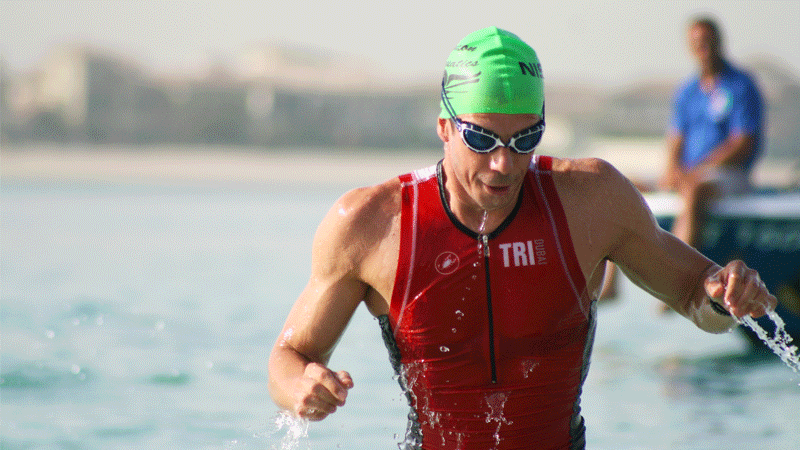
The Process: How I Collected This Data
I pulled the data from Ironman branded races only (purely because it was the most accessible). I took 9 x full distance races and 10 x 70.3 races over a 5 year period (2013 – 2017) to get a large enough data sample.
I included each of the Ironman Championship races along with some of the more popular races around the world.
Here is the complete list:
Full Ironman Races
● IM World Championships – Kona
● IM Texas North American Championships
● IM South Africa African Championships
● IM Frankfurt European Championships
● IM Cairns Asia-Pacific Championship
● IM Brazil (South American Championship)
● IM Arizona
● IM Coeur d’alene
● IM Western Australia
Ironman 70.3 Races
● 70.3 St George
● 70.3 Oceanside
● 70.3 Steelhead
● 70.3 Pays d’Aix
● 70.3 Ruegen
● 70.3 Western Sydney
● 70.3 Italy
● 70.3 Vichy
● 70.3 Kraichgau
● 70.3 Coeur d’Alene
● 70.3 Taupo
Full Ironman Races
● IM World Championships – Kona
● IM Texas North American Championships
● IM South Africa African Championships
● IM Frankfurt European Championships
● IM Cairns Asia-Pacific Championship
● IM Brazil (South American Championship)
● IM Arizona
● IM Coeur d’alene
● IM Western Australia
Ironman 70.3 Races
● 70.3 St George
● 70.3 Oceanside
● 70.3 Steelhead
● 70.3 Pays d’Aix
● 70.3 Ruegen
● 70.3 Western Sydney
● 70.3 Italy
● 70.3 Vichy
● 70.3 Kraichgau
● 70.3 Coeur d’Alene
● 70.3 Taupo
I collected the swim times for each AG over each year (2013-2017). I then sorted the data to make some sense of it and make it easier for you to look at and understand.
For the “Better Than Your Average” data I used the “median” athlete exiting the water in each race. That’s the middle athlete, the one that separates the top 50% from the bottom 50% in a race. It’s not the average swim time for your age group. It’s the time of the athlete that came out the water bang in the middle of their AG on race day.
For the “Top 10%” I looked what time it took to break into in the Top 10% of athletes racing in your Age Group on that day.
I was also interested in what it takes to be a good specialist “distance” swimmer in the pool. I felt it important for you to see what specialists are doing at your age in the same sport.
The numbers are interesting. Let’s take a look.
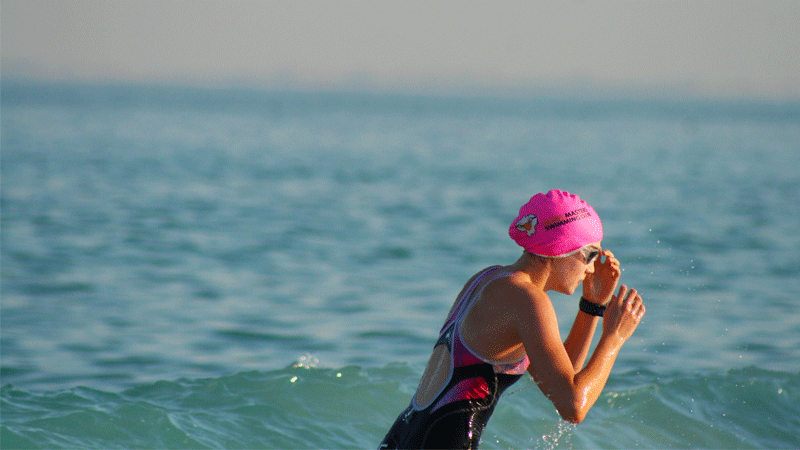
Are You Better Than The Average Tri Swimmer?
What does it take to swim in the top 50% in your Age Group? Here’s what I found.

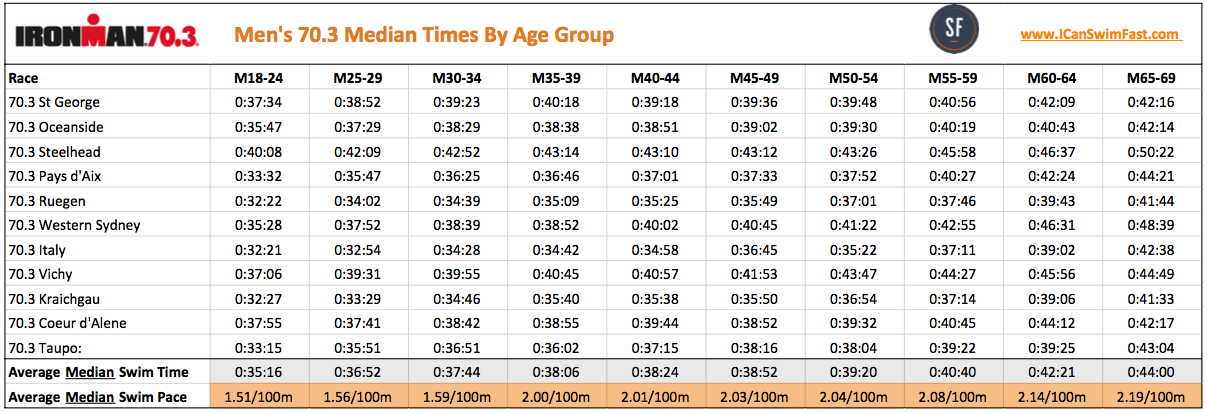
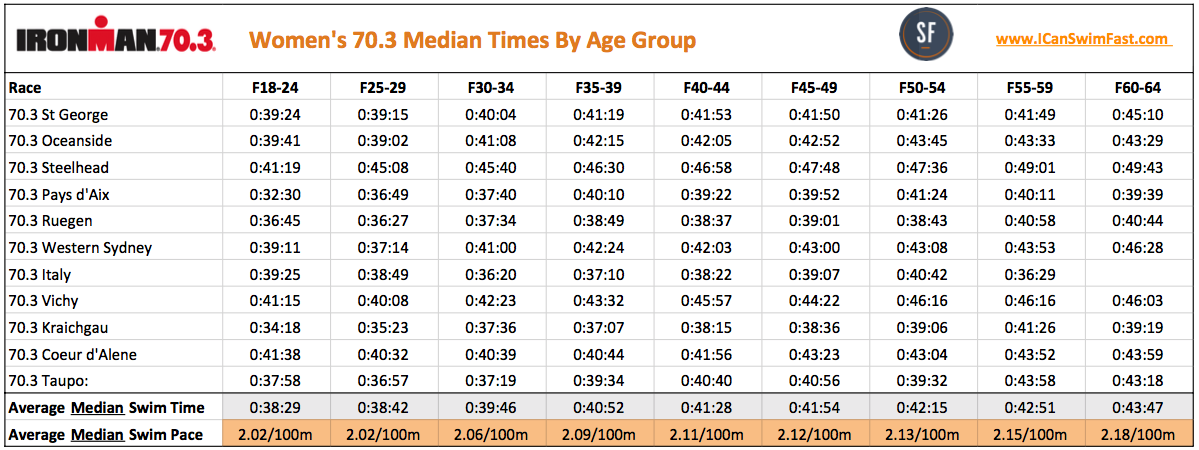
Obviously the first thing you’ll want to do is determine how well you stack up.
At the most basic level:
● If on average you swim faster than the pace for your age group you can consider yourself “above average”.
● If on average you’re slower than this time, and your goal is to be competitive you have a bit of catching up to do.
But there is a lot more we can learn from this data than whether you are above or below average
Key Takeaways To Help You Be Better Than Average
Swim times get slower as you move up through the Age Groups
Every AG sees a decline in pace as they move up through the categories. The only exception being the M25-29 age group being faster than the M18-24 AG.
This is to be expected, but you can use this knowledge to your advantage.
The majority of triathletes learned to swim as adults. As an adult onset swimmer, chances are you’re nowhere near your genetic swimming potential. Here’s what I mean by that.
I will never swim as fast as I did when I was at age 24. Back then, swimming was my life. At that point I was swimming roughly 35 hours a week. I refined my technique and pushed my training when my body was in its prime. Now, with reduced training hours and an older body I can’t swim as fast. I still swim with pretty good technique which helps. But I will never swim as fast as I did in my prime.
If you never “peaked” in your prime like I did, you can continue to get faster as long as you stay consistent with your training. Body position plays a bigger role in speed than power when you are in the water. So even if you aren’t as strong as you get older, as long as you continue to improve your technique you can get faster. When you age up, you’ll be faster and your competition will be relatively slower.
This, my friend is attrition working in your favor!
On Average Full Ironman paces are faster than 70.3 paces
The average middle guy swims at 2.02/100m for an Ironman and at 2.06/100m for a 70.3. The average middle lady swims at 2.09/100m or an Ironman and at 2.12/100m for a 70.3.
It is interesting that average pace of a 70.3 swim is slower than that of an Ironman. You would think that the longer the distance the slower the pace, however this is not the case.
Many of the triathletes I meet ultimately want to race a full distance Ironman. Most of them only want to commit to it when they are confident they can finish the distance though. As a result the 70.3 races get used as a stepping stone to the longer races. So you have more first timers to long course races signing up for 70.3’s than full Ironman. My theory is that the less experienced athletes bring the averages down.
There are other factors at play too (one of which I discuss further down), but I think experience and quality of athlete this is likely the biggest contributor.
Open water swim times are always relative.
The swim splits in a race can be very deceptive. Generally you can’t take them at face value and you shouldn’t do so as you run up to T1.
You may think you had a particularly bad swim in a race because you were 3 minutes slower than your last race. But that’s not necessarily the full picture.
Take a look at this:


The average median swim time can vary as much as 10-13 minutes in a Ironman from year to year. Meaning you could be 10 minutes faster than your goal swim time, but actually have left the water lower down the rankings relative to the field.
Open water swim times are always relative. Course length, weather conditions and currents all play a role in the speed of a course.
My last 70.3 race in Colombo is a prime example. I averaged 1.22/100m for the 1900m swim. A pretty poor pace (by my standards) for a 1900m swim if it was done in the pool! After the race I looked at the numbers. My watch data showed me that we worked against a very strong current on the last 900m of the swim. I averaged 1.07’s/100m on the way out and 1.33’s on the way home. I wasn’t the only guy in the water that had to work against the current, if I did, everyone did. So the times are relative to the competition.
Make a comparison of how you stacked up against your competition on the day vs the absolute value of a swim time.
It Sucks To Get Stuck in the Middle (If You’re Not a Cheater)
Your predominant focus should be on what’s happening in your age group. Those are the people you’re directly competing against. Yet the overall median times we just looked at above are useful to know.
These are the paces where you’re likely to have the highest traffic and biggest groups on the swim course.
This means fighting traffic at the turn buoys. Everyone knows it’s no fun getting breaststroke kicked in the forehead going round a buoy.
Depending on the popularity of a race, if you came out in the middle overall in the swim you leave T1 with a very large group of people.This means you may have to burn matches to avoid drafting packs. These packs form on races with a large number of athletes racing. 70.3 Dubai, 70.3 World Championships, Ironman Texas and Kona immediately spring to mind.
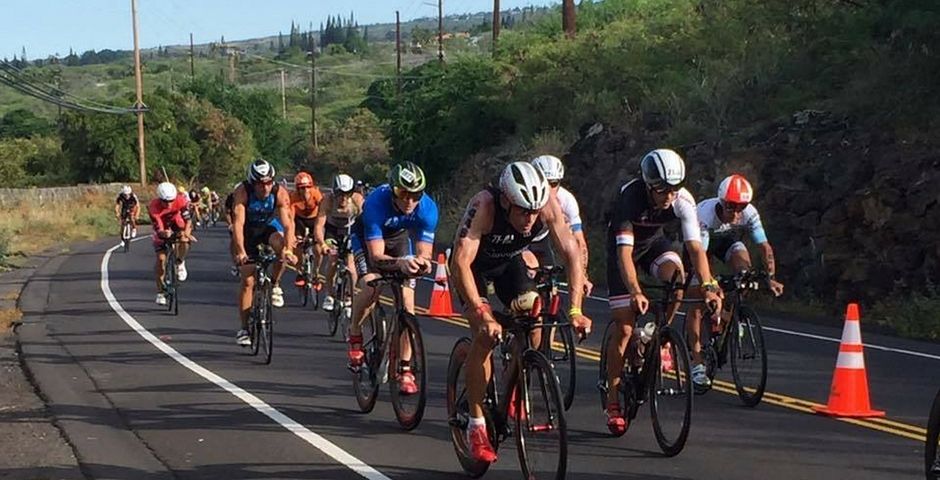
*These guys would have all come out the water together in Kona
It takes a lot of effort to race clean and keep yourself out of the packs when you’re swimming in the middle. If you want to stay out of the pack controversy, swim faster.
Are You A Good Tri Swimmer?
Now that we have an idea of what it takes to be better than the average Tri Swimmer, lets move up the ranks. What does it take to be good?
Using the same data, here is a look at the times it takes to break into the Top 10% of swimmers coming out of the water on race day.

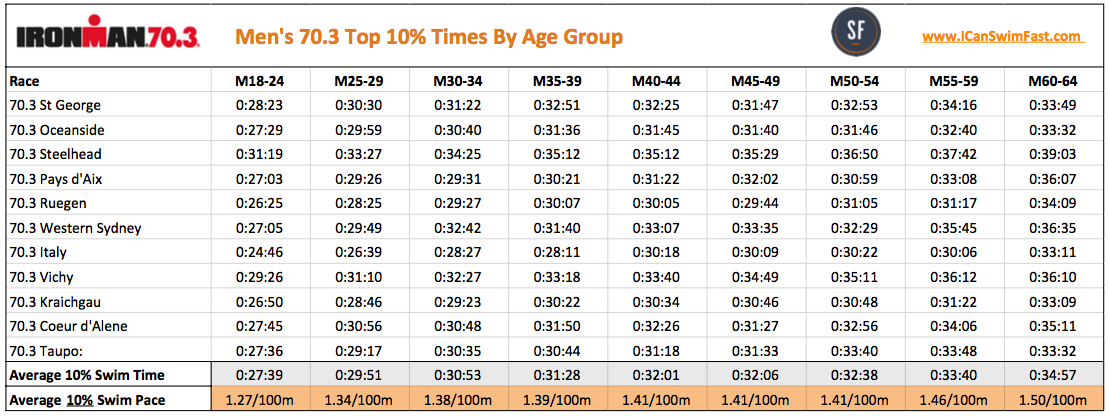


Key Takeaways
There’s a Big Difference Between Average & Good
The first thing I notice is that there is a fairly substantial jump in pace from the middle athlete in any Age Group to the ones breaking into the Top 10%. I’ll discuss this in more detail a little further down.
On Average Full Ironman paces are still faster than 70.3 paces
The average top 10% time is still slightly faster over the IM distance vs the 70.3 distance. But not by much and the difference is very small. This is to be expected. The swimmers that are breaking into the top 10% have more experience. They have a better grasp of pacing, how to race and how to manage open water conditions.
Your Aerobic Pace Is Similar Regardless of Distance
The similarity in pace between the IM and 70.3 swims is interesting. At the top end of the field, the average pace a swimmer holds over 3800 is close to what they hold over 1900m.
Does that suggest that the aerobic pace you settle into is pretty much the same whether you are swimming for 30 minutes or for 1 hour. I think it might. We see this at the elite level too.
The winning time for the Men’s’ 5k Marathon swim at the Swimming World Championships in 2017 was 54:31, a pace of 1.05/100m. It took a 1:51:58 to win the 10k Marathon swim, a pace of 1.07/100m.If you wanted to know what World Class Fast is, there you go! This close split times holds up in the 2015 and 2013 5k & 10k races too. 2017 wasn’t an abnormal year – the pace differs by no more than 2 seconds per 100m.
Your aerobic speed holds up regardless of distance. Provided you’re fit, breathing well and have the fuel to burn you don’t slow down much once you tap into your aerobic swim pace.
If you’re new to triathlon swimming this should fully convince you that you don’t need to swim 3800m or even 2500m straight to train for an Ironman race.
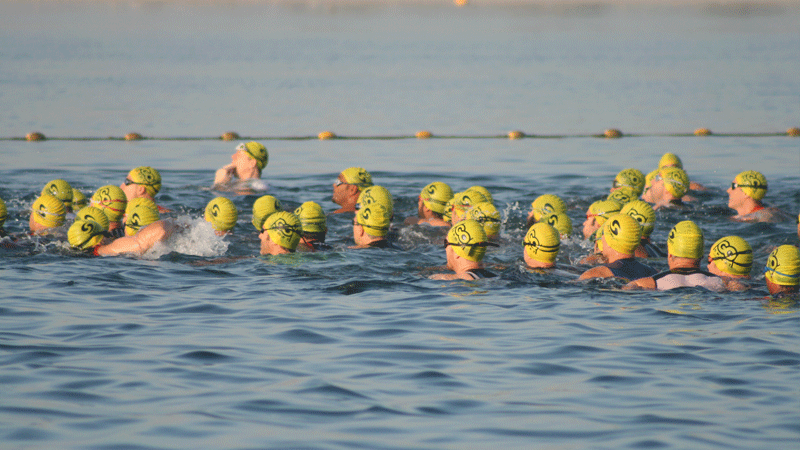
The Jump from Average To Good
We’ve already seen the big jump need to break into the top 10%, on both the men’s and women’s side. But here is a side by side comparison from each Age Group to help you see clearly what is needed.
You can click on each image to read the numbers more clearly.
It’s a fairly big jump. And as we’ll see next, the jump is even bigger when we get to the big show in Kona.
Are You A Very Good Tri Swimmer?
Can you imagine swimming up at the front of the field at Ironman World Champs? That would awesome. It would also put you in the group of “Very Good” triathlon swimmers.
I say very good not only because you’re racing the best triathletes in the world. The mass in-water start and the non wetsuit swim in Kona make it unique, and in theory slower than races that are wetsuit legal and use the rolling start. Kona is the only race on my list that is always non wetsuit legal and the only one with a mass start in water start.
Despite this, swim times in Kona are faster on average than the other races on my list. Across all Age Groups the ladies need to swim a 1.41/100m average to break into the top 10% while the guys need to hold 1.35/100m (this is skewed slightly by the 55-59 & 60-64 AG’s. If we remove those two groups the men’s Average drops to 1.32/100m).
Here’s how it breaks down in each AG.
How Fast Do Specialist Age Group Swimmers Swim?
I’ve shown you what you need to be capable of to be an average, good and very good Tri swimmer. But what about the specialists?
To answer that for you, I pulled up the Fina Masters World Championships Qualifying times. “Masters” swimming is the competition platform for swimmers over 18. The Age Groups are split in a similar way to triathlon which makes it easy to compare.
To qualify for Masters World Champs you have to achieve the qualifying time in each event for your AG. Trying to compare apples with apples I pulled the 800m, 400m and 200m qualifying times for each AG.
The 800m Freestyle is he longest distance freestyle event open to Masters swimmers.
I included the qualifying times for the 200 and 400 freestyle to calculate a theoretical CSS pace for you (👈🏼 link to an explanation of Critical Swim Speed) . Racing the 800m in a pool as a single event and finishing the swim in the first leg of a tri are very different. It wouldn’t be a good comparison if that was all we looked at. I felt that calculating a theoretical CSS pace gives a better comparison.
Here are the QT’s


If you know your CSS pace (👈🏼 link to CSS calculator), that will be the easiest way to compare where you stand in relation to a specialist swimmer.
The comparison isn’t completely fair. We’re comparing open water times to pool times, but looking at the CSS pace of the athletes I coach, the standards of being a great swimmer are quite a bit higher than the standards for being a good tri swimmer. There’s a fairly simple explanation for that…
A majority of masters swimmers come from a swimming background. They learned and swam competitively at a young age. And most of them would be considered very good or great tri swimmers.
Many of the swimmers that race at Masters World Championships swim 5+ times a week. And they do so without the added fatigue of running and riding. Carrying fatigue from your other training significantly impact your progress in the water.
Despite that, having these numbers should still be useful. It should give you insight into what is being done by athletes at your same age in the water.
How Can You Use This Data?
“Knowledge is of no value unless you put it into practice”
So now you know what the data says, but what do you do now?
1. Figure out how you stack up
This data will give you an objective baseline for comparison. How do you stack up? Are you in the top 50%? Are you within striking distance of the top 10%. Where do you fall?
2. Workout Out Your Primary Focus
If your swim isn’t as fast as you would like, it doesn’t necessarily mean it should be your key focus area for improvement.
Remember you’re a doing a triathlon. The goal is to finish with the fastest overall time. Not the fastest swim time. You will need to look at more than just your swim rankings, to work out what to focus on.
Here’s how to do that. Pull up your race results from your last race. If it’s an Ironman branded race this will be very easy to do.
Take a look at your individual rankings for each discipline. Find out how you stack up in your Age Group in the swim, the bike and the run. Then look at how you stack up in transition time.
Where do you rank in each discipline? Is one significantly better or worse than another? If so, you know where to put your focus in the next training cycle.
Here’s an example from my first 70.3 race.

I’ve already told you I would consider my swim in this race to be pretty poor. But relative to the field, my run is far weaker than my swim. It’s very easy to see where my weakness lies and what I need to work on as I go into the next season. To improve my overall result, I need to work on my running, not getting my swim to a level that my ego would be happy with.
Side Note: The transition time is a performance area that gets overlooked. I die a little bit inside whenever I see one of my clients slog for months to improve their swim. On race day they swim 3 minutes faster, fantastic! And then they take 7 minutes in T1. Improving your transition time is WAY easier than improving your swimming time!
3. Establish an Appropriate Goal
The data gives you a framework to set realistic goals. So what are those goals?
The more time I spend coaching Age Group Triathletes the more I learn how board the range of goals and desires are. When I swam, the goal was pretty simple – make an Olympic team. That was the goal of pretty much everyone I raced against and trained with. It’s not that simple in triathlon. There are so many people of different ages, shapes, sizes and backgrounds. You might all be racing the same race, but everyone has a slightly different goal.
Use this data to help you set realistic goals for your swimming. Align with your ultimate goal or purpose of racing triathlons with the goals you set.
4. Remember, Good Enough is Good Enough
As much as saying this hurts my business, remember that your goal in any triathlon swim is to be good enough.
I showed you what times you would need to swim to compete in Kona. I also showed you what great specialist swimmers do so you have some benchmark idea of what’s possible. It’s been shown over and over again that coming out ahead in the swim means nothing in the big picture. Very rarely does anyone lead a race wire to wire.
It might be tempting to want to chase the guy that came out the water first in your AG. If your goal is to be competitive, get up somewhere near the front and you’ll be perfectly poised after the swim. If you can ride and run well, you’re in the money. If you can’t, being competitive might not be your ultimate goal 🙂
Age Group Triathlon Swimming Is Unique.
My hope is that this post has helped give you some context to the nuances and standards of triathlon swimming. It’s certainly been valuable to my athletes in helping them chase good triathlon swim time goals that are appropriate and realistic.
Put your last 70.3/full IM swim time down in the comments as well as your age group and gender. Don’t be shy, lets see how all of our numbers stack up against the averages!
~ Rory

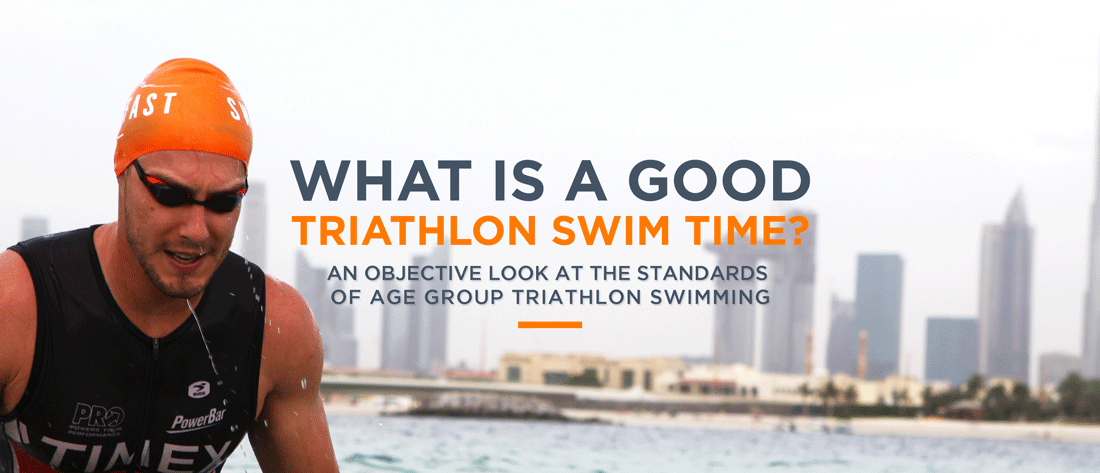






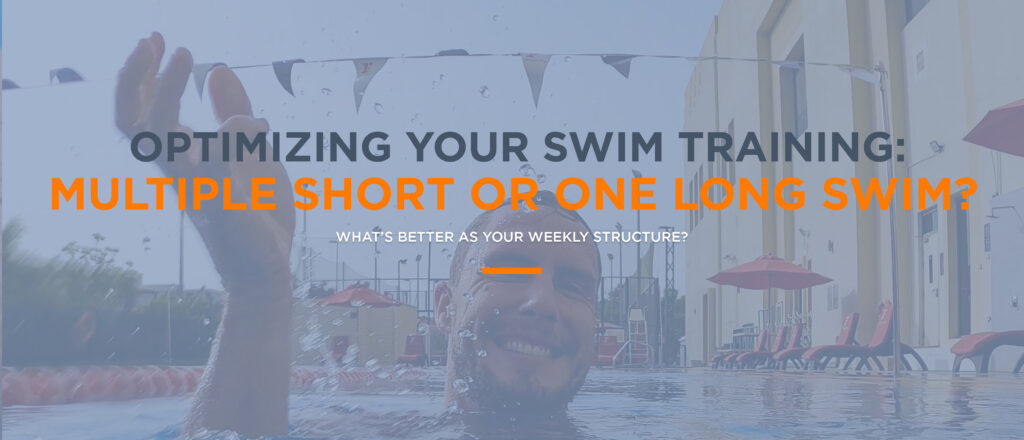
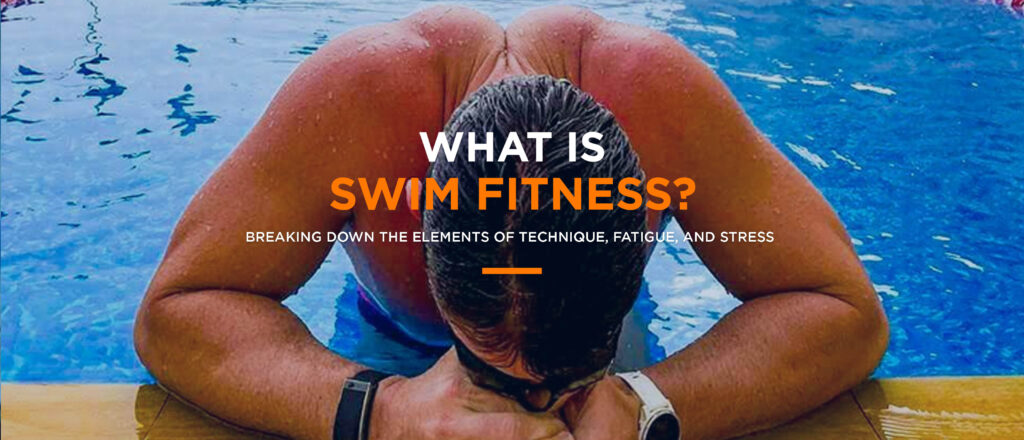
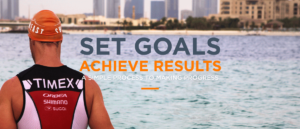

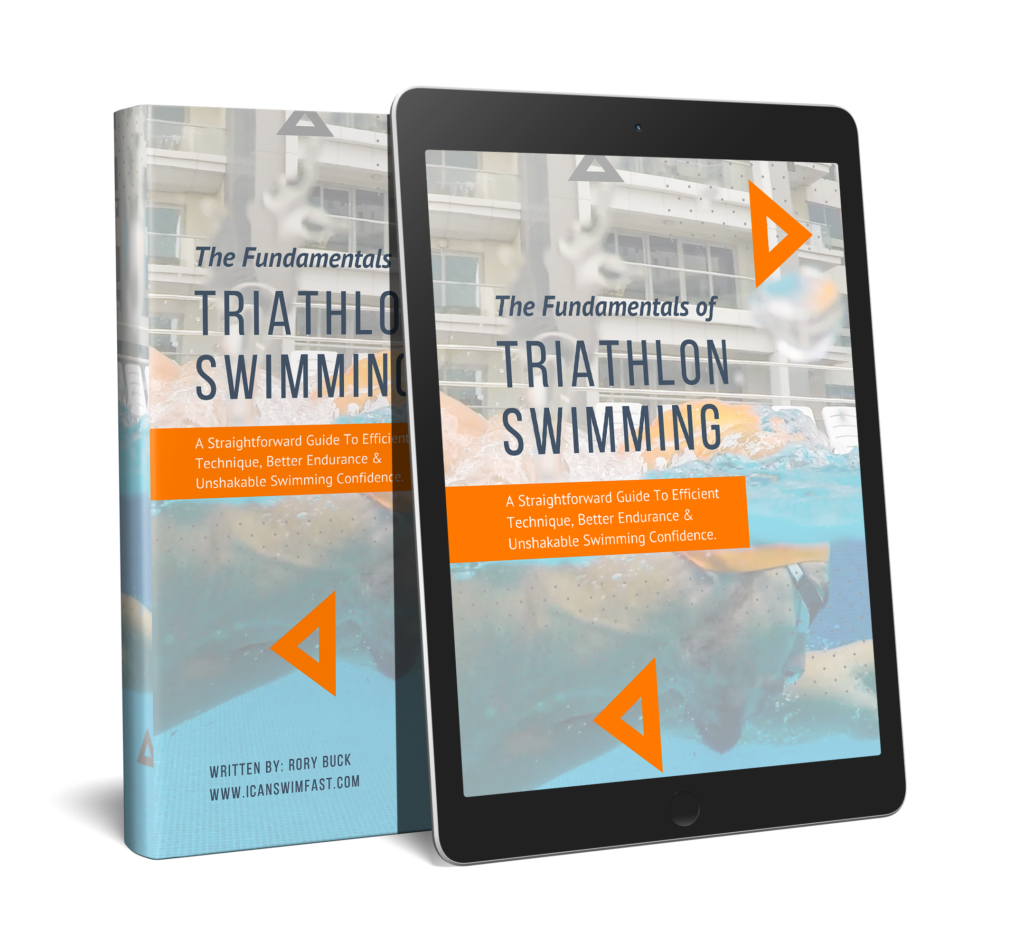

28 thoughts on “What is a Good Triathlon Swim Time?”
Male, 30-34 AG.
1.22/100 in my last 70.3 (Colombo). Subjectively a time I would be disappointed with. Objectively there wasn’t anything wrong with it looking at the big picture.
Female, 30-34 AG.
I have never raced, but my CSS pace is 1.37.
Great article with information that can’t be found anywhere else! Thanks Rory.
Thanks Carla. If you were able to transfer your CSS pace well into open water swimming it would put you up in the top 10% for your age and gender! I’d say that’s pretty good! The key is being able to transfer that speed. 👊🏼
July 23, 2023 IM Ohio 70.3, 57:05 (2:57/100). Lake swim, no wet suit. By comparison, I swam in the low 40’s in Waco last year (river with wetsuit).
I still consider myself a beginner and my pool swim times for 1000 yards are around 18-19 minutes.
In your research, how much does the type of swim (river, lake, ocean) and wetsuit matter? I hate to try to compare what I feel is successful in Waco, to a poor swim in Ohio considering how different they were. I feel like my two swims were so different that I don’t know what to think of my slow time in Ohio.
I plan to do either Waco or Ohio again, now that I know the courses.
Really enjoyed this post Rory, cheers!
Male, 30-34 AG.
Just completed IM UK (my first!) with a swim of 1:40. 1,575th of 2087.
My objective was a relaxed 1:20. While I did stay relaxed and fresh, the glare from the sun meant I zig zagged a lot and didn’t have the know how to use landmarks (I couldn’t see any!) or use my hand to block the sun temporarily.
I know where my weaknesses have been for the past 2-3 years of triathlon so I’ll be working on that in the next few months. I have never calculated my CSS pace so that will be one of the first things I do.
Congratulations on becoming an Ironman, Andy! That huge! 👊🏼
Mastering the skill of sighting is critical. You want to get your sighting strokes to a point where it’s so “automatic” or second nature that you have the ability or presence of mind to adjust the sighting stroke when you’re in conditions that make it tough to see where you are going. At the same time, remember that if you were swimming through the glare, chances are most people had to deal with it and that would affect everyone’s swim time, not just yours (still work on your sighting though 😉)
Working off your CSS pace will help keep you honest and accountable in your training. I’d highly recommend it!
Hi Rory,
Great article! It’s nice to see how we stack up. I’m looking to lock in that <10% next year. Just need to step up that run game 🙂
Male, 40-44
Completed Coeur d'Alene 70.3 in June.
Swim time 33:03
CSS – 1:27
You stack up very nicely, Jared! You’ve put in a load of hard work over the last year to get down to that CSS pace. You can be proud of that.
Breaking into that top 10% would be awesome to see… also, how is that run of yours coming along 😉
Hi Rory,
Alan here 36years old from the little island of Malta.
Great detailed article and very informative so thanks for taking time to collect all the info and passing it on to all of us out here. I’m taking part in my first triathlon sprint next year and wanted to compare my swim time to see where I am. I currently swim 400mtrs in a 4.10 average with a fastest time of 3.58s and as per your data I think I’m doing ok. If I keep these timings can I consider myself to be in the top 10%?
Thank you once again for the info and good day.
Kind regards,
Alan
Hey Alan,
Great to hear from you. I appreciate your notes. When you say you swim 400m at an average of 4.10, are you saying it takes you about 16-17 minutes to swim the 400? If I am reading it correctly this is what I believe you are saying. Can you confirm and I will give you my thoughts on preparing for your first race.
~ Rory
Hi Rory,
Catherine here, I’m 45, from Australia but based in Kuwait. We have been communicating by IG and email after the ITU IG post about swimming in the tri in March.
Super interesting article and gives me hope for the future as a swimmer who I think (based on your averages) is in for a chance.
I have not been properly tri training for terribly long, but I am familiar with and love the water. Especially OW. All the information you provided is fascinating and I look forward to dipping into the rest over the next few weeks.
Looking forward to training with you in March.
Cheers,
Cat
Hi Cat,
Very happy to hear you found this helpful. I know how challenging it can be when you are new to a sport, have a competitive nature but have no idea what to bench mark your performance or pace off of! Glad that the numbers you see here have given you some hope and motivation! Now the work starts 😉
~ Rory
Hi Rory. Great article. I did my first 70.3 in Maryland. Eagleman ironman. Had an absolute blast. My age is 58 and my swim was 33.31
Had some minor swim goggle malfunction where my right cup just kept filling up with water during the swim. I guess thing just happen. Im signed up and in prep now for ironman lake placid 2023. Thanks ,Kev
Hey Kev,
glad you found it useful! Nice work on that 33.31, that’s a very good swim, especially for your first 70.3 and having some issues with your goggles. OW swimming presents all kinds of challenges, practice and experience helps deal with them in the heat of the moment.
Good luck for your build into Lake Placid next year!
~ Rory
Question on your /100m time .
Your time splits per 100m are noted with a decimal (.) and not a colon (:) as expected for a time. When you note 1.41/100m, are you saying 1:41 (1minute and 41 seconds) or actually 1.41 (using 41 hundredths = one minute and 24.6 seconds)? This is a big difference in pace.
Thank you for the clarification,
Russ
Hi Russ, the times are most certainly 1 minute 41/100m.
~ Rory
Rory, I’m a 64 years old age grouper that only learned how to swim 4 years ago. I have done few Olympic distance tri and training for my first 70.3(AZ). Fascinating article. I found that my OWS time is always slower than my pool time. I was always taught that to go faster, either increase my stroke rate or increase my distance per stroke, assuming the technique is correct. I’m a working progress.
Hi Raul, thanks for your comment! The open water is a much more dynamic environment with many more variables playing a role in how fast you are able to swim. A lot of those variables are out of your control, but at a minimum there are two of them that are in your control that you could work on to help see your pool times transfer into the open water. Specifically:
– Sighting. Make it comfortable, make it efficient. Make it habitual. Swimming straight is always the best way to swim 😊
– Stroke rate. You can afford to “glide” a little longer in the pool and increase your DPS. In the open water if you extend your DPS out too long you will decelerate between each stroke (which obviously slows you down but also takes more energy to accelerate into the next stroke). You may also get pushed slightly left/right during that glide period causing you to go off course and then if your sighting isn’t on point, to swim a longer distance.
Keep on working hard!
First HIM Virginia 70.3 swim time: 35:10, 23rd in AG
Hey Mary, thanks for the comment! For your first outing I’d say that’s a pretty solid showing! Hope the rest of your race went well too!
Awesome article and stats. Thanks for the hard work compiling and crunching the numbers. Very insightful. IM Arizona 70.3 2017. 1:46 average/100 yds. AG 60-64.
Hey Greg, thanks for your comment! Nice work on your 1.46/100, that should have put you in the top 50% for you AG I assume, if I recall correctly Arizona is a pretty fast swim course though!
Great Article ,. I went for a gentle 1 km swim my Fenix S Garmin watch recorded the pace it was 2.23 per 100 for 1km … ( just wondered what other 60y women’s swim times were as I had no idea & now I know . 🙏
Hey Pam, thanks for the comment and your feedback!
If you did you 1k swim in the open water, remember that open water times / paces will always be based on the conditions and can swing in both directions! Glad you found the article helpful!
Do you have similar data for Olympic and sprint Tris?
Jim,I do not. That data isn’t as easy to come by.
But as per the discussion point about your aerobic speed being very similar (all things equal, which they often aren’t in the open water) Olympic distance paces won’t be too different from the 70.3 distance paces.
~ Rory
Hey! Do you have any stats on what triathletes actually think about the swim? How many times/week they train etc.
Hi Victor, yes – I’ve been collecting that data from my clients for 6+ years!